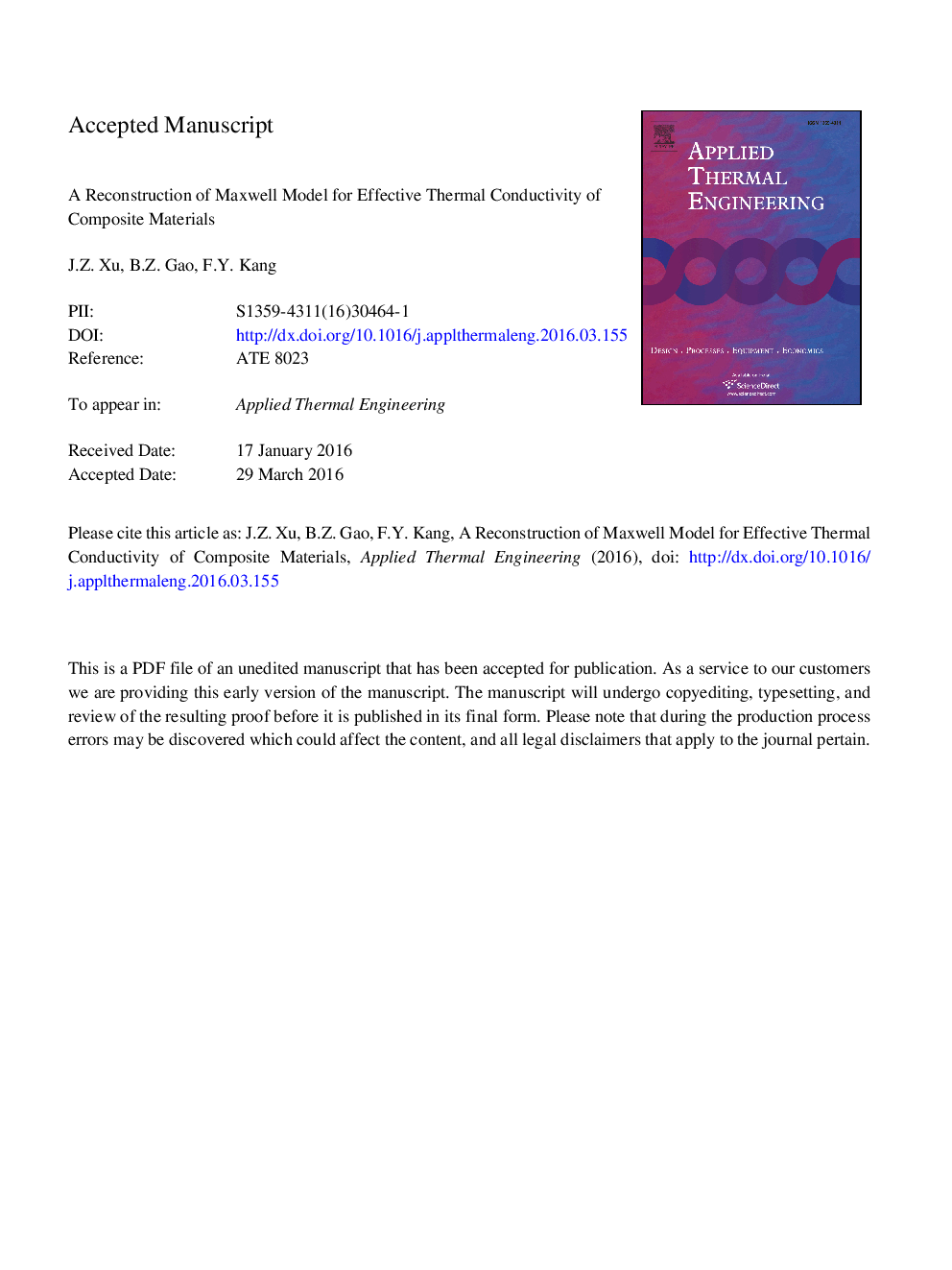| Article ID | Journal | Published Year | Pages | File Type |
|---|---|---|---|---|
| 7048289 | Applied Thermal Engineering | 2016 | 22 Pages |
Abstract
Composite materials consisting of high thermal conductive fillers and polymer matrix are often used as thermal interface materials to dissipate heat generated from mechanical and electronic devices. The prediction of effective thermal conductivity of composites remains as a critical issue due to its dependence on considerably factors. Most models for prediction are based on the analog between electric potential and temperature that satisfy the Laplace equation under steady condition. Maxwell was the first to derive the effective electric resistivity of composites by examining the far-field spherical harmonic solution of Laplace equation perturbed by a sphere of different resistivity, and his model was considered as classical. However, a close review of Maxwell's derivation reveals that there exist several controversial issues (deficiencies) inherent in his model. In this study, we reconstruct the Maxwell model based on a potential mean-field theory to resolve these issues. For composites made of continuum matrix and particle fillers, the contact resistance among particles was introduced in the reconstruction of Maxwell model. The newly reconstructed Maxwell model with contact resistivity as a fitting parameter is shown to fit excellently to experimental data over wide ranges of particle concentration and mean particle diameter. The scope of applicability of the reconstructed Maxwell model is also discussed using the contact resistivity as a parameter.
Keywords
Related Topics
Physical Sciences and Engineering
Chemical Engineering
Fluid Flow and Transfer Processes
Authors
J.Z. Xu, B.Z. Gao, F.Y. Kang,
